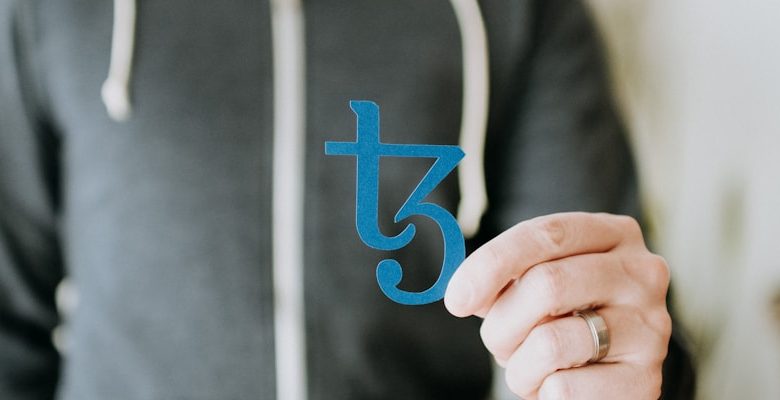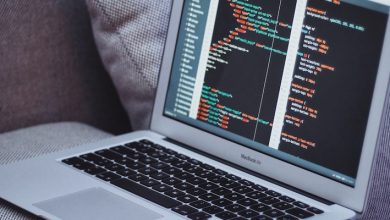How to Set Up Your First Crypto Wallet

- Understanding the basics of cryptocurrency wallets
- Choosing the right type of crypto wallet for your needs
- Creating a secure and strong password for your crypto wallet
- Backing up your wallet and keeping your private keys safe
- Exploring the different features and functions of popular crypto wallets
- Tips for safely storing and accessing your cryptocurrency
Understanding the basics of cryptocurrency wallets
Cryptocurrency wallets are essential tools for anyone looking to enter the world of digital currencies. These wallets are digital tools that allow you to store, send, and receive various cryptocurrencies such as Bitcoin, Ethereum, and Litecoin.
There are two main types of cryptocurrency wallets: hot wallets and cold wallets. Hot wallets are connected to the internet and are ideal for frequent trading and transactions. Cold wallets, on the other hand, are offline devices that provide an extra layer of security for long-term storage of cryptocurrencies.
When setting up a cryptocurrency wallet, it’s crucial to choose a reputable provider that offers robust security features and user-friendly interface. Some popular cryptocurrency wallets include Ledger Nano S, Trezor, and Coinbase.
It’s important to note that cryptocurrency wallets come with both public and private keys. The public key acts as your wallet address and is used to receive funds, while the private key is used to access and manage your funds securely. It’s essential to keep your private key secure and never share it with anyone.
Choosing the right type of crypto wallet for your needs
When it comes to setting up your first crypto wallet, it’s crucial to choose the right type that aligns with your needs and preferences. There are several options available in the market, each with its own set of features and benefits.
One popular choice is a **hardware wallet**, which offers enhanced security by storing your cryptocurrencies offline. This type of wallet is ideal for long-term investors who prioritize safety above all else. On the other hand, if you prefer easy access to your funds and frequently make transactions, a **mobile wallet** might be more suitable. Mobile wallets are convenient for those who are constantly on the go and need quick access to their crypto assets.
**Desktop wallets** are another option for users who prefer to manage their cryptocurrencies from their computers. These wallets provide a good balance between security and accessibility, making them a popular choice for many traders and investors. Lastly, **online wallets** are cloud-based storage solutions that can be accessed from any device with an internet connection. While online wallets offer convenience, they are also more vulnerable to cyber attacks compared to hardware wallets.
Ultimately, the right type of crypto wallet for you will depend on your individual needs and preferences. It’s important to research each option carefully and consider factors such as security, convenience, and ease of use before making a decision. By choosing the right wallet, you can ensure that your crypto assets are safe and easily accessible whenever you need them.
Creating a secure and strong password for your crypto wallet
When setting up your first crypto wallet, it is crucial to create a secure and robust password to protect your digital assets. A strong password is the first line of defense against unauthorized access and potential theft of your cryptocurrencies. Here are some tips to help you create a secure password for your crypto wallet:
1. **Avoid using easily guessable information** such as your name, birthdate, or common words. Hackers can easily crack passwords that are based on personal information.
2. **Use a combination of uppercase and lowercase letters,** numbers, and special characters. This will make your password more complex and harder to crack. For example, consider using a mix of letters, numbers, and symbols like “P@ssw0rd!21”.
3. **Make your password at least 12 characters long.** The longer the password, the more secure it is. Aim for a minimum of 12 characters to increase the strength of your password.
4. **Avoid using the same password** for multiple accounts. If one of your accounts is compromised, all your other accounts with the same password could be at risk. It is recommended to use a unique password for each account, including your crypto wallet.
5. **Consider using a passphrase** instead of a single word. A passphrase is a combination of multiple words that are easy for you to remember but difficult for others to guess. For example, “PurpleMonkeyPizzaDance” is a passphrase that is easy to remember but hard to crack.
By following these tips and creating a secure and strong password for your crypto wallet, you can better protect your digital assets from unauthorized access and potential theft. Remember to regularly update your password and keep it confidential to ensure the security of your crypto holdings.
Backing up your wallet and keeping your private keys safe
It is crucial to back up your wallet and keep your private keys safe when setting up your first crypto wallet. This will help protect your assets and ensure that you can always access your funds. Here are some important steps to follow:
- First, make sure to create a secure backup of your wallet. This can usually be done by exporting a file containing your private keys or seed phrase. Store this backup in a safe place, such as a secure digital storage device or a physical paper wallet.
- Next, never share your private keys with anyone. Your private keys are what give you access to your funds, so keeping them confidential is essential for security.
- Additionally, consider setting up a strong password for your wallet. This will add an extra layer of protection in case someone gains access to your device or backup file.
- Finally, be cautious when using public Wi-Fi networks or sharing your wallet address online. Hackers can potentially intercept your information and gain access to your funds if you are not careful.
Exploring the different features and functions of popular crypto wallets
When it comes to popular crypto wallets, there are various features and functions that users should explore to find the best fit for their needs.
One popular type of crypto wallet is the hardware wallet, which offers enhanced security by storing private keys offline. These wallets often come in the form of a physical device that can be connected to a computer when needed.
Another option is a software wallet, which can be accessed through a desktop or mobile application. Software wallets are convenient for everyday use and can support a wide range of cryptocurrencies.
Some wallets also offer multi-signature functionality, which requires multiple private keys to authorize transactions. This added layer of security can be beneficial for users who want to protect their funds against unauthorized access.
Additionally, many wallets come with built-in exchange services, allowing users to easily swap between different cryptocurrencies without leaving the wallet interface. This feature can save time and effort for those who frequently trade in the crypto market.
Overall, exploring the different features and functions of popular crypto wallets can help users make an informed decision when setting up their first wallet. By understanding the options available, users can choose a wallet that aligns with their security preferences and trading habits.
Tips for safely storing and accessing your cryptocurrency
When it comes to storing and accessing your cryptocurrency, it is crucial to prioritize security. Here are some tips to help you keep your digital assets safe:
- Use a hardware wallet to store the majority of your cryptocurrency. Hardware wallets offer offline storage, making them less vulnerable to hacking attempts.
- Enable two-factor authentication (2FA) on all of your cryptocurrency exchange accounts. This adds an extra layer of security by requiring a second form of verification in addition to your password.
- Keep your private keys offline and in a secure location. Your private keys are essentially the passwords to your cryptocurrency wallets, so it is important to keep them safe and away from prying eyes.
- Regularly backup your wallet data to prevent any potential loss of funds. Consider storing backups in multiple secure locations to ensure redundancy.
- Avoid accessing your cryptocurrency accounts on public Wi-Fi networks or shared devices. These can be more susceptible to hacking attempts, putting your funds at risk.
By following these tips, you can help ensure that your cryptocurrency remains secure and easily accessible whenever you need it.



